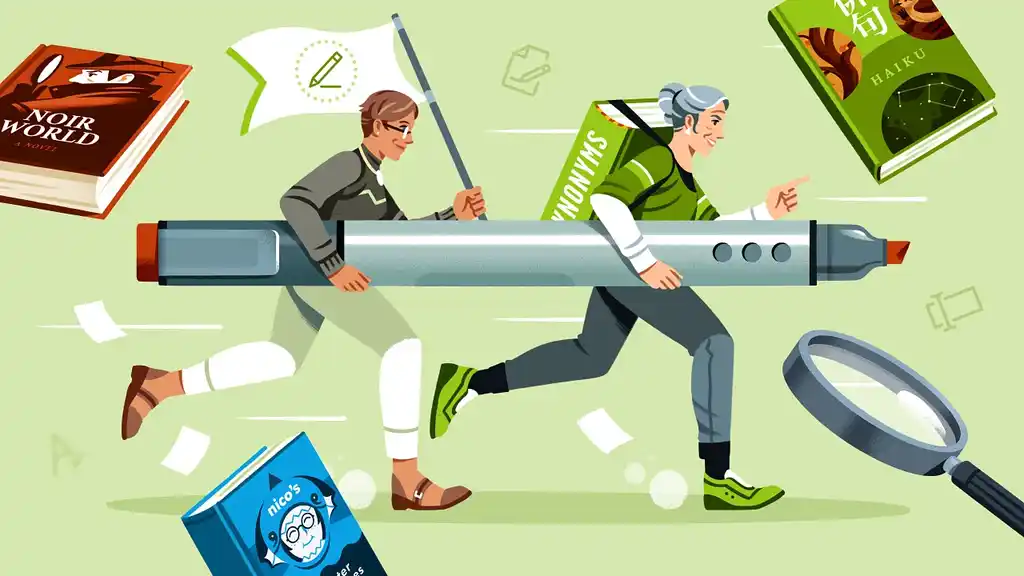Guides • Understanding Publishing
Last updated on Jun 18, 2025
Successful Self-Published Authors: 17 Inspiring Stories
About the author
Reedsy's editorial team is a diverse group of industry experts devoted to helping authors write and publish beautiful books.
More about the Reedsy Editorial Team →Dario Villirilli
Editor-in-Chief of the Reedsy blog, Dario is a graduate of Mälardalen University. As a freelance writer, he has written for many esteemed outlets aimed at writers. A traveler at heart, he can be found roaming the world and working from his laptop.
View profile →Self-publishing has seen remarkable growth in the past few years, with over 2 million titles released every year. In 2022, self-published authors grossed $874 million in ebook sales, and were discovered to be earning more on average than their traditionally published counterparts.
In today’s market, indie authors are not just surviving, they’re thriving! However, it’s not just about how much money they’re putting away: their stories are often inspiring journeys of perseverance in the face of rejection and doubt, and carving a path when there isn’t one.
In this post, we'll explore successful self-published authors, from household names to less-famous but equally noteworthy writers. Let’s dive right in.
✅
Are you ready to self-publish your book?
Find out here! Takes one minute.
1. Amanda Hocking
One of the first self-published authors to earn millions through paranormal romance novels on Amazon, Hocking started writing at a young age, like many writers on this list. By the time she was working in residential care in her mid-twenties, she had already written over a dozen books, many of which she pitched to agents without success.
Q: How can authors protect their rights when publishing, especially in the age of AI?
Suggested answer
I don't think anyone can fully protect themselves. If you act in good faith you will find that most other people will do the same. There will always be rogues, but selling books is hard enough if you are the real author, even harder if you have stolen it.
Andrew is available to hire on Reedsy ⏺
As the story goes, her turning point for her came in 2010 when she posted her books on Amazon to make $300 for a trip to see an exhibition about Muppet creator Jim Henson. Little did she know that this decision would change her life dramatically. Her stories quickly found a devoted fanbase and, within a year, she'd sold over a million copies!
Her incredible indie success soon caught the attention of traditional publishers, leading to her first contract with St. Martin's Press for a new series. Since then, Hocking has published over 30 books, many of which have become New York Times bestsellers.
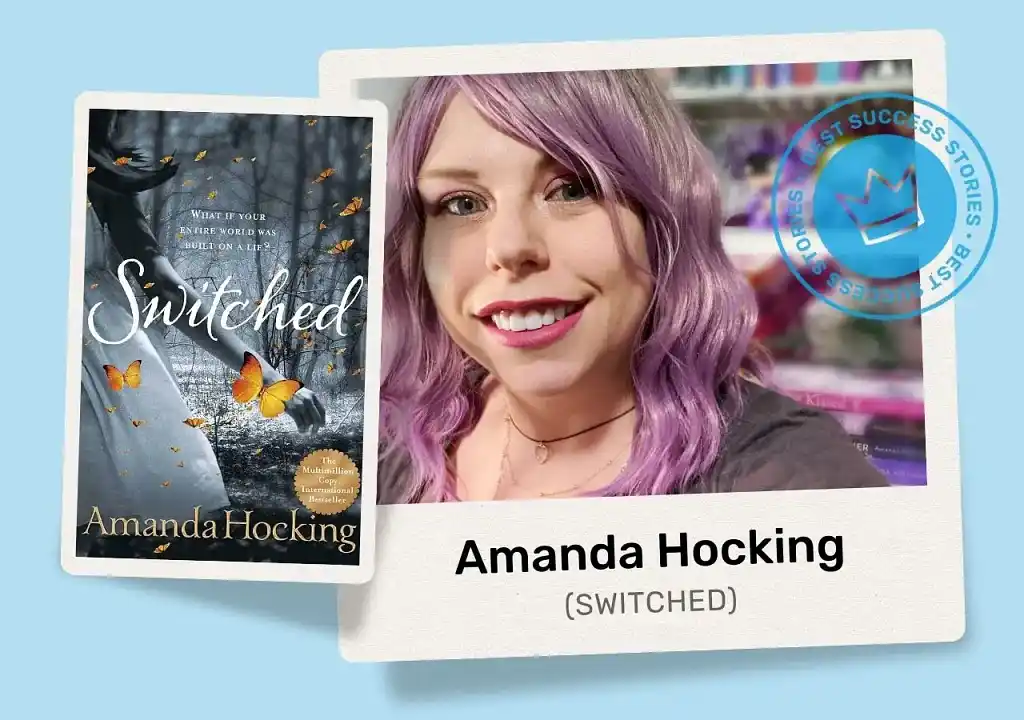
2. E.L. James
Fan fiction has been a key part of reader communities, allowing fans to explore their favorite stories in new ways. By the early 2010s, online platforms like FanFiction.net and Archive of Our Own became a hub for fans to reimagine and expand beloved narratives, like Harry Potter and Twilight, within familiar "sandboxes". One of these fans was E. L. James, who in 2011 wrote Master of the Universe, a Twilight fan fiction that eventually evolved into the wildly successful Fifty Shades trilogy, consisting of Fifty Shades of Grey, Fifty Shades Darker, and Fifty Shades Freed. Although she initially faced rejection from fan fiction sites due to the explicit content, she eventually published it through The Writer's Coffee Shop, a fanfiction site turned indie publisher. The book was released as both an ebook and a print-on-demand paperback.
Critics might have turned up their noses at the writing, but readers couldn't get enough of young Ana Steele and her spicy shenanigans with billionaire bad boy Christian Grey. The series became a global sensation: it was picked up for re-release by Random House's Vintage Books, sold over 165 million copies worldwide, and had a trilogy of blockbuster Hollywood adaptations. With sales numbers that rival the Harry Potter books, it’s hard to top E.L. James’s level of success!
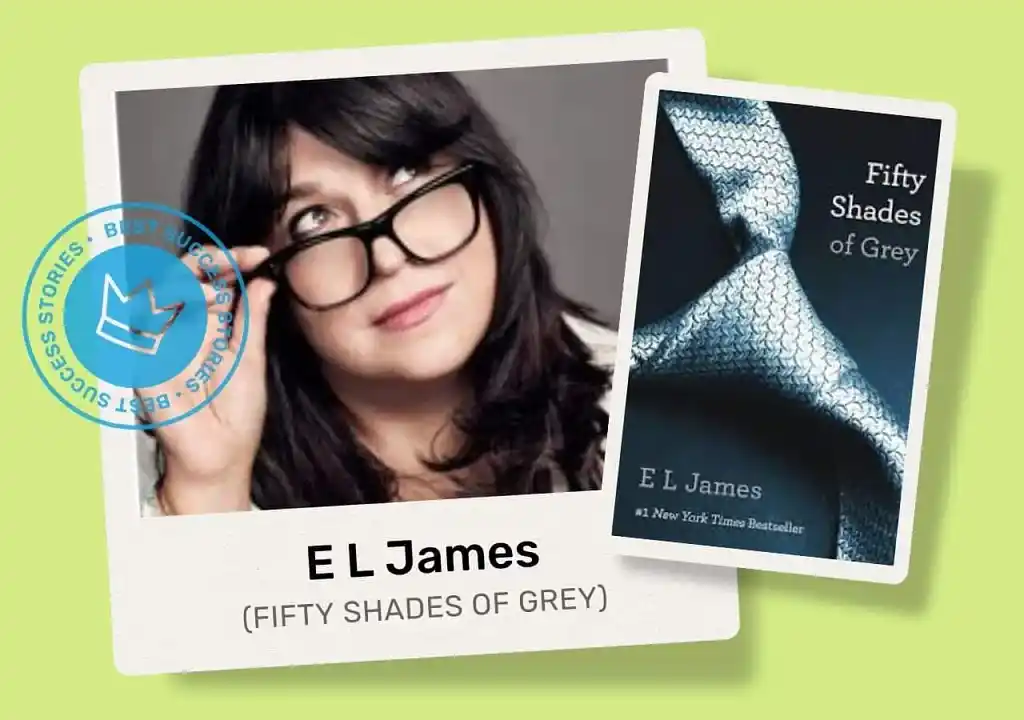
3. Andy Weir
Few journeys to literary success are as unconventional and inspiring as Andy Weir’s. Growing up with a physicist father and an electrical engineer mother, Weir inherited their passion for science and was a self-proclaimed "space nerd" from a young age.
For two decades, Weir worked as a software engineer, indulging his love for sci-fi by writing on the side and publishing stories on his personal website. It wasn't until his late 30s that his work began to gain attention, first with his popular short story The Egg and his webcomic, Casey & Andy. In 2011, Weir released The Martian, an interplanetary adventure grounded in hard science.
Q: What are the most effective ways for authors to begin monetizing their writing, particularly in the early stages of their career?
Suggested answer
Take advantage of every single opportunity that comes your way in the beginning. Don't be too picky. If the front door is locked, go in the side door. Or find a window. , I had great luck with blind queries in the beginning and that was before email kids. I built many relationships that way, and most of all, keep believing in your talent, be agile, be diligent, and above all LEARN HOW TO SELL YOURSELF
Bev is available to hire on Reedsy ⏺
If you are a non-fiction author you can use your book as a platform to get speaking engagements even before your book is published. Once it is published, ask the business you are speaking for to purchase books for each of the conference attendees and then include this purchase in your speaking "package."
Melody is available to hire on Reedsy ⏺
If by "best," we mean "fastest," then self-publishing is the way to go, since there're no gatekeepers, meaning no wait time. As soon as your book's done, you can get it up for sale. But if we mean best as in "long-term for your career," that becomes a fuzzier proposition because you need to weight the wait time, rejection, potential rewrites/edits, and possibility of never having something accepted inherent in traditional publishing against the prestige that still comes with making it into that world. It also depends what level of control you want for your work. You obviously get much more with self-publishing, but perhaps you'd benefit from the edit you might get from an editor at a legacy press. Lots of variables here, but my advice is always to be honest with yourself regarding your goals.
Legacy prestige is great and all—and, if it goes well, can be much more lucrative—but there's a lot to be said for having full control of your product.
Brett is available to hire on Reedsy ⏺
As the free web novel's popularity grew, readers requested a more accessible format, so he listed it on Amazon KDP for just 99 cents. The story caught the eye of a small audiobook company, whose founders saw its potential and offered Weir a deal to produce an audio version. This move catapulted The Martian to become Audible's top-selling title and shot its popularity into outer space. Random House took notice and purchased the print rights, offering Weir an advance worth over $100,000. Within a few years, the story was adapted into a blockbuster movie starring Matt Damon, which went on to gross millions at the box office.
Needless to say, Weir no longer writes code to pay the bills, and has since published other successful novels, most notably Project Hail Mary, which is getting its own Hollywood treatment as a Ryan Gosling vehicle.
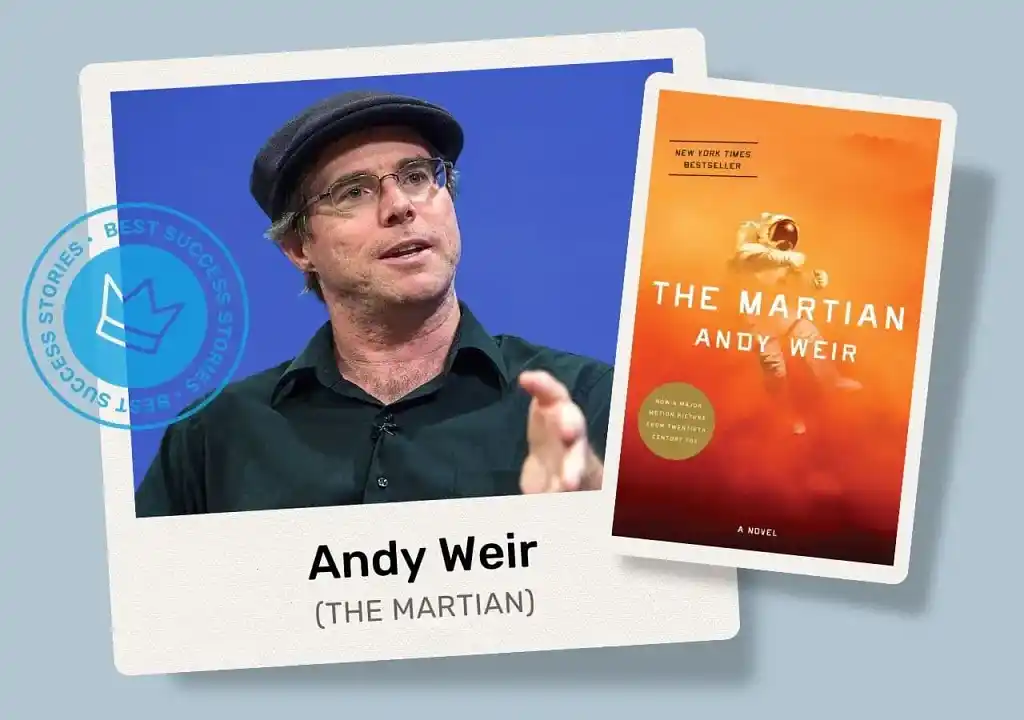
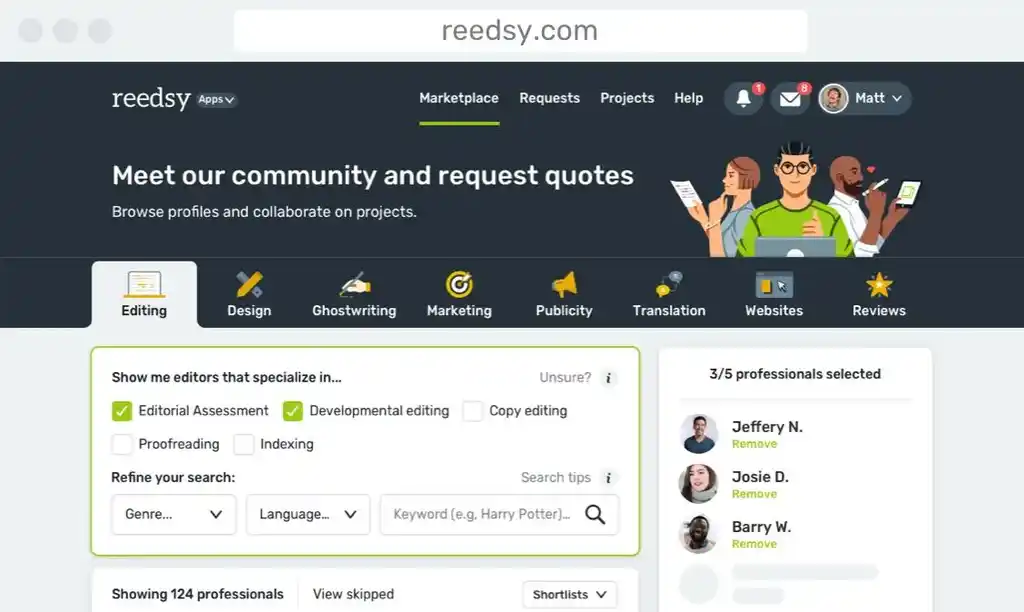
Polish your book with expert help
The best editors in the industry are on Reedsy. Come meet them.
Learn how Reedsy can help you craft a beautiful book.
4. Colleen Hoover
If you visit Colleen Hoover's author website today, you can buy signed copies, an apparel collection, and custom nail designs inspired by her novels. You'll also learn that TIME magazine named her one of the 100 most influential people of 2023, that plenty of her novels were New York Times bestsellers, many of which were adapted for the big screen.
However, this trad-pub superstar had humble beginnings as an indie author. At 42, she self-published her debut novel Slammed on Amazon. According to the New York Times, she was "making $9 an hour as a social worker, living in a single-wide trailer with her husband, a long-distance truck driver, and their three sons."
Without an agent or publisher, she relied solely on a compelling story that captivated young readers. Within seven months of self-publishing Slammed, she had earned $55,000 in royalties, which she used to pay back her stepfather for the trailer. Since then, she has written many other bestsellers, including Confess and It Ends With Us, working with several different publishers.
A significant factor in her success, beyond her undeniable talent, is her close relationship with her fans. Readers became obsessed with her work, sharing their enthusiasm on TikTok and other social media platforms, which Hoover herself has embraced. This connection has allowed her to become a true literary phenomenon, making her one of the most influential authors in contemporary fiction.
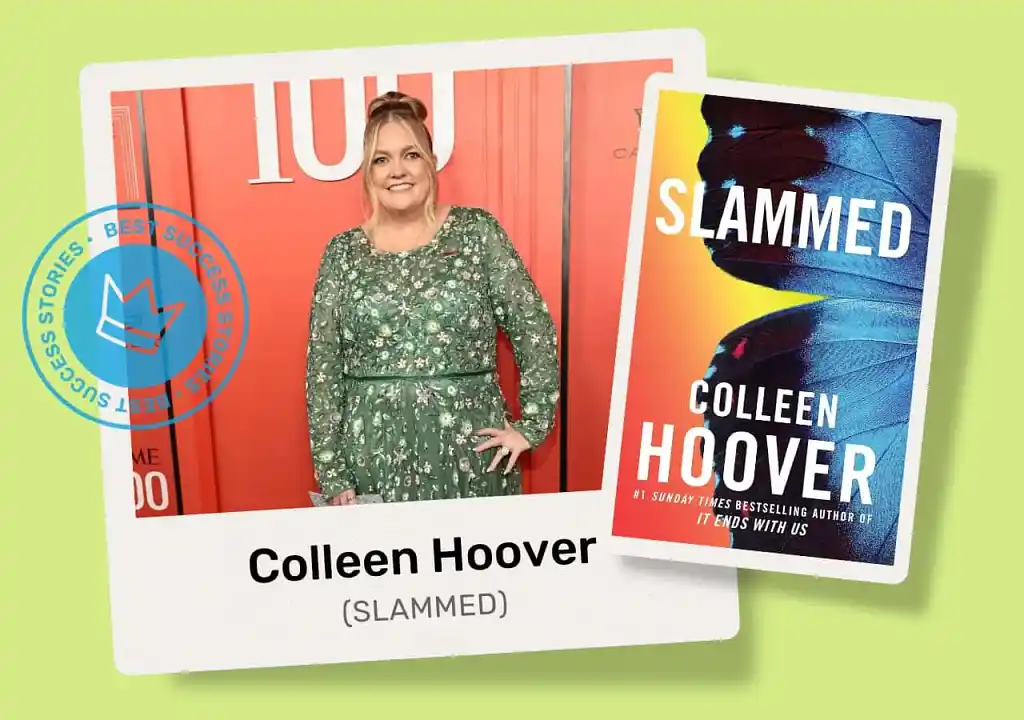
5. Lisa Genova
In 2007, Harvard-educated neuroscientist Lisa Genova spent a year querying literary agents for her novel Still Alice, a story about a woman with early-onset Alzheimer's. Despite her efforts, she faced constant rejections, which made her question her writing ability and whether she was a "real writer." After yet another agent rejected her query, Genova decided to take matters into her own hands: “Okay, then. I’ve had enough of this. I’m self-publishing,” she told the agent. They replied, “Don’t self-publish. You’ll kill your writing career before it begins.”
Ignoring the warning, Genova self-published Still Alice and took charge of her own marketing. She promoted the book on platforms like MySpace, Goodreads, and Shelfari and organized readings at local venues, Alzheimer's care facilities, and book clubs. In other words, she built her own momentum.
Q: What are the most common mistakes authors make when self-publishing?
Suggested answer
From my conversations with self-publishing authors, here are some points came up most frequently:
- Cover design - trying to do it yourself if you don't have an understanding of design principles (or skimping by paying someone peanuts). Whether we like it or not, everyone is judging everything and everyone. First impressions count and good (exceptional) design, attracts attention. I myself have been known to purchase books just because of a gorgeous cover (and hoping the story will be as good!).
- Formatting - poor formatting will absolutely degrade all your efforts. Subconsciously, readers shouldn't be drawn to the layout. An exceptional one doesn't stand out (by way of - "There's something "off" with this layout"), and allows the reader to focus on the book content. Excellent formatting reflects an excellent product.
- Marketing - clearly defining who your target audience is, means you have clarity when it comes to creating your marketing content. It helps you market specifically to those most likely to purchase your book/s and develop a loyal following. Writing your book was one part of it. The marketing is as important to get it out into the world and it requires effort and a good understanding of what your specific book needs, so that it can garner the right attention.
- Audience - ignoring your audience and not engaging with them (or hearing their feedback), can be detrimental. They're your main source of importance when it comes to your reach. Truly understanding who they are (as above in marketing - your target audience), is crucial. They will want to engage with you and will reciprocate with loyalty.
- Procrastination and Perfectionism - this is probably one of the greatest issues we face (across humanity to be honest), and it's also a natural part of being human, that we must overcome. Learning how to optimize your time, carving out when you're most productive and sticking to it daily, and tracking when and how often you show up, creates your lifelong "good" habit. We want to weed out the bad habits that stop us from creating the work. Waiting for "the right time" is a fallacy and something that will blindly rob you of precious days, months and sometimes years. Show up for your future self now and develop the habits (over goals), that will compound over time and create the results needed. It's the actual action-taking that gives you clarity. You just need to start and keep going. Know one gets it right in the beginning. Just don't quit on yourself.
- Editing - after your hard work of bringing your book to life, this is an extremely important part of the writing process. We are so close to the work that we can easily miss what is right in front of us. A professional editor can whip you into shape and saving you time, effort and will elevate the quality exponentially.
The way to success is to never give up. Remember why you are doing it and enjoy the process!
Leoni is available to hire on Reedsy ⏺
One of the most common mistakes I see with self-published authors is setting unrealistic timelines for their publishing journey. Many writers plan their schedule far too tightly and only reach out to professionals—whether editors, designers, or marketers—at the very last minute.
This creates unnecessary stress on both sides: the author feels rushed and overwhelmed, while the professionals either have to decline the project or take it on under less-than-ideal conditions. In the worst case, authors struggle to even find available professionals because their preferred timeline doesn’t allow for the necessary lead time. Many professionals book out months in advance, so it’s wise to plan at least four months ahead—and in many cases, even that may not be enough time.
It’s also important to remember: as self-publishers, you are free to set your own pace. Unlike in traditional publishing, there is usually no external deadline or audience impatiently waiting for the book—especially when it’s a debut. That pressure often comes only from a self-imposed timeline. Instead of rushing, it’s far wiser to take the time to do everything properly, work with professionals without stress, and then launch the book when it’s truly ready.
Publishing a professional-quality book requires space for collaboration, revisions, and creative breathing room. When timelines are compressed, the process becomes about “getting it done” rather than “getting it right,” which can ultimately compromise the quality of the finished book. A thoughtful, realistic schedule not only reduces stress but also ensures that every stage of the process—from editing to design—has the attention it deserves.
Sabrina is available to hire on Reedsy ⏺
One of the biggest traps authors fall into when self-publishing is thinking that the hard part ends once the book is written.
In reality, self-publishing is as much about production as it is about creativity, and overlooking that side can leave even the best manuscript looking unprofessional.
I’ve seen too many writers skip professional editing, try to design their own cover, or leave marketing as an afterthought, and the results are usually disappointing. But just as important, and often less discussed, are the mistakes around the actual printing and publishing process. Authors frequently go with the first printer they find rather than getting at least three quotes, which is a sure way to overpay.
Others don’t ask whether VAT will be added on top of the quoted price, only to discover the true cost later.
Perhaps the most heartbreaking mistake is not asking to see samples of the paper and materials being used; the author waits excitedly for their book to arrive, only to be handed a flimsy volume on cheap stock that feels nothing like the work they poured their heart into.
The truth is, self-publishing is about producing a product as much as sharing a story. Taking the time to ask questions, compare options, and insist on seeing exactly what you’ll be paying for can mean the difference between a book that looks like an amateur project and one you’re genuinely proud to hold in your hands and which reflects the hard work you have put in as well as the hopes, naturally enough, of your client to hold a book in their hands which is a quality item.
Edward is available to hire on Reedsy ⏺
I've read a fair number of self-published books, and one thing I have noticed is that an unprofessional interior book design does impact my reading experience.
Interior book design is about all that invisible work that makes a book visually pleasant to read. If the lines break poorly, if the font is too big or too small, if the line spacing is too tight or too loose, if the font selection is one that's difficult on the eyes, especially after reading for a long time--all of this will subtly make your reader tired while reading, and, perhaps subconsciously, less likely to enjoy reading your book. They might not even know why! And by the end, they may be left with this feeling that they didn't want to pick up the book to read it as much as they have other books, which is not a feeling you want your readers to have, especially for something so easily fixable.
A well typeset book is unnoticeable. That's the point! Your reader doesn't notice the words on the page. Instead, they glide over them, immersed in the story. But a poorly typeset book stands out. Your reader's attention is pulled from the story again and again because the words are too squished together to read easily, or because there was one dangling line all by itself on the last page of a chapter and that looked odd, or because the font for the text messages was inconsistently applied.
Interior book design is an important part of the publishing process that I think a lot of self-publishing authors overlook.
Emily is available to hire on Reedsy ⏺
The most common mistakes authors make when self-publishing are: 1) Not focus-group testing yout title and subtitle, Check with Amazon for duplicate titles, and ask friends/colleagues 2) Not obtaining at least 2 endorsements, for front and back cover. 3) Not creating a publisher name for themselves Amazon. If you publish under your personal Amazon account, the "publisher" will be listed as "independently published," which can erode credibility. Instead, set up your KDP account in the name of a publisher you invent. There are many more, like poorly-designed covers and interiors, but these are of the most overlooked.
Michael is available to hire on Reedsy ⏺
Common mistakes:
Unrealistic or distorted view of public interest (Harsh, I know.)
Family and friends aren't fans--neither are paid reviews. It is important to be as objective as possible when assessing your book's popularity. I say this because many indie and early-stage authors believe they need what NY Times BEst Selling authors need, and that can lead to a lot of wasted time and money.
Acting as your own publishing company
It may seem like creating a separate name as your "publishing company" but the reality is, you don't yet have a company. This can be misleading to actual publishers that may be interested or contribute to the mistake mentioned above. These days, authentically doing everything on your own is more appealing to readers and publishers than the "fake it 'til you make it" strategy.
Starting a blog
If you aren't ready to commit to a regular schedule or writing blogs in batches, you don't need a blog on your website. Focus more on a simple and clear website and point of sale, then drive traffic to it. A blog isn't going to get you traffic unless you treat the blog itself as a business of its own.
Chad is available to hire on Reedsy ⏺
Something I have seen quite a lot lately in the self-publishing world: trying to do everything by yourself. Thinking that you just need Photoshop to make a cover, spell-checking software to edit, a dictionary and a bit of knowledge to translate. Never underestimate the value of a human professional who has spent years studying and then honing their skills. There is more to translation than substituting one word with another, just as there is more to a cover than a bunch of drawings and a title. Find the right professional for you and your project, and work closely with them; you won't regret the expense, I promise. Also, yes, some types of stories and tropes are very popular right now, and those seem like a safe bet, as far as marketing and selling go - but likely there are a lot of similar books out already. In traditional publishing, variety is sorely lacking, because a tried and tested product seems safer; let's avoid repeating that mistake. Write the story that's in your heart and then strategically find your niche audience. You'll find them starved for exactly your flavour of creativity.
Mariafelicia is available to hire on Reedsy ⏺
After some initial positive feedback, hired a publicist to amplify her reach. Her hard work and strategy paid off: she landed TV and radio interviews, won the 2008 Brontë Prize for best love story in North America, and eventually secured a literary agent. The rights for Still Alice sold at auction to Simon & Schuster for a six-figure deal, and in 2014, it was adapted into a film starring Julianne Moore (who won the Oscar for this role!)
Genova has since written multiple bestsellers, including Remembering, a nonfiction book on the science of memory and memories (like your first kiss, or…agents’ rejections!). In her own words, “choosing to self-publish didn't end my writing career—it catapulted it into an incredible journey beyond anything I had imagined.”
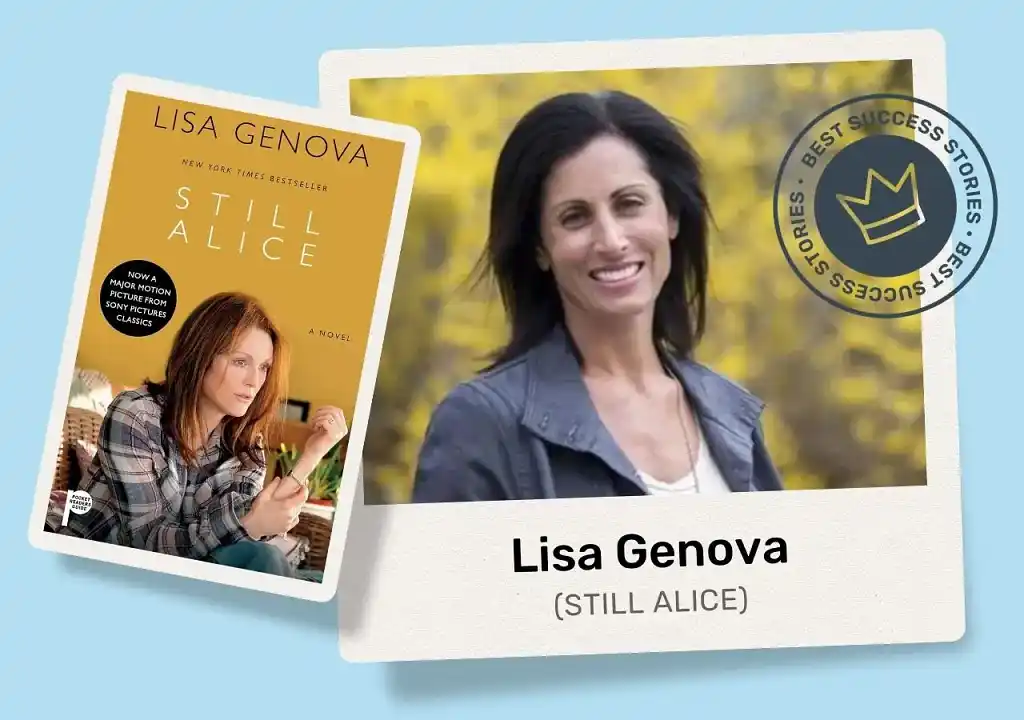
6. Michael J. Sullivan
Micheal J. Sullivan's journey with traditional and self-publishing is full of twists and turns. After writing and pitching thirteen novels in fifteen years and facing over one hundred rejections, he vowed never to write creatively ever again. But after nearly a decade in the creative wilderness, he started getting the urge again. So he wrote a fantasy series, The Riyria Revelations, just for his personal enjoyment and for his dyslexic daughter, without any plan for publication.
His wife, Robin, encouraged him to pursue publication again, and took over the grueling task of submitting to agents. After failing (again) to find a publisher, they decided to self-publish.
The Riyria Revelations series quickly gained online traction. By the time he released the fifth book, Sullivan was selling 2,500 copies a month. This success caught the eye of Orbit (Hachette), leading to a six-figure deal to re-release the series in three omnibus editions.
Q: What are some effective ways an author can supplement their income outside of book sales?
Suggested answer
If someone tells me that they are set on making their return on investment for a book project off their book sales, I do not work with them. They are delusional. It is almost impossible to make any money - much less pay back the amount of time and energy you invest in a ghostwriter or other collaborators - through book sales alone.
Instead, authors need to think of the book as a leverage point for other business opportunities. You can use the book to secure high profile (and paid) speaking engagements, to connect with new clients, or to general raise the profile of your brand. What you want to achieve with the book depends on your goals, and a premium ghostwriter or collaborator will help you not only produce a great product, but also help you think through how to leverage that stand-out book to get the highest ROI possible.
This is a great resource to learn more about the ROI of a book: https://authorroi.com/
Jeff is available to hire on Reedsy ⏺
For most authors, income from book sales should never be regarded as the mainstay of their earnings.
Royalties are modest at best and tend to arrive infrequently.
On a book that retails at £19.99, the average royalty for a traditionally published author is around 7.5 percent, which works out at roughly £1.50 per copy sold.
That’s before you consider that many publishers calculate royalties not on the cover price but on what they actually receive from retailers, which reduces the amount further.
Payments are often made only once or twice a year and, if you’ve been given an advance, you won’t see a penny in royalties until that advance has been earnt on sales.
All of this means that unless you’re selling in the tens of thousands, book royalties are not a reliable or regular source of income. Instead, most working writers sustain themselves by making use of their skills across a wide range of outlets. Blogging, feature writing, journalism and copywriting all offer more predictable fees, whether paid per article or on a retainer basis. Editing and proofreading services can provide steady work too, paid per project, per word, or by the hour, while ghostwriting, though variable, can be highly lucrative when the projects come in.
Teaching is another avenue. Writers often run workshops, lead community groups, or teach courses at schools, universities or online, all of which provide session fees that are far more consistent than royalties.
More modern approaches include producing digital content such as podcasts, online courses, or subscription newsletters via platforms like Substack or Patreon, which allow writers to build a community of supporters and enjoy regular income.
Even library lending can add a little extra through the UK’s Public Lending Right scheme, which pays authors each time their books are borrowed.
In the end, the crucial point is that being a writer opens the door to an enormous range of possibilities beyond the narrow lane of book royalties. You may have written a novel, but your skills can just as easily be applied to commercial copy, specialist features, editorial support, or teaching. Diversifying in this way not only brings in the stability you need to keep writing but also broadens your craft and strengthens your voice.
And yet, despite all this, books remain the heart of why most of us write. A novel or memoir may never pay the bills on its own, but it is where the art and joy of creativity truly lie. Approaching book writing as a passion first, rather than as a financial lifeline, allows you to create with freedom and authenticity.
The income you make elsewhere keeps you afloat, but the books you write remain the truest expression of your voice and imagination-and play a vital part in developing you as a writer until you reach a place where a book may make all the difference.
I wish you every joy and success.
Edward is available to hire on Reedsy ⏺
Sullivan's relationship with the publishing world continued to evolve. After a few novels with Orbit, he self-published Hollow World, a science fiction novel deemed too controversial by the imprint. Undeterred, the Sullivans calculated that it’d cost them $6,000 to publish a book, and crowdfunded the project on Kickstarter, eventually raising a whopping $31,000.
In the years since, Michael J. Sullivan has published a number of epic fantasy and science fiction novels and series, some on his own and some with traditional publishers, becoming a New York Times, USA Today, and Washington Post bestselling author. His journey is an inspiring tale about believing in your craft, and a reminder that there's no single path to success in publishing.
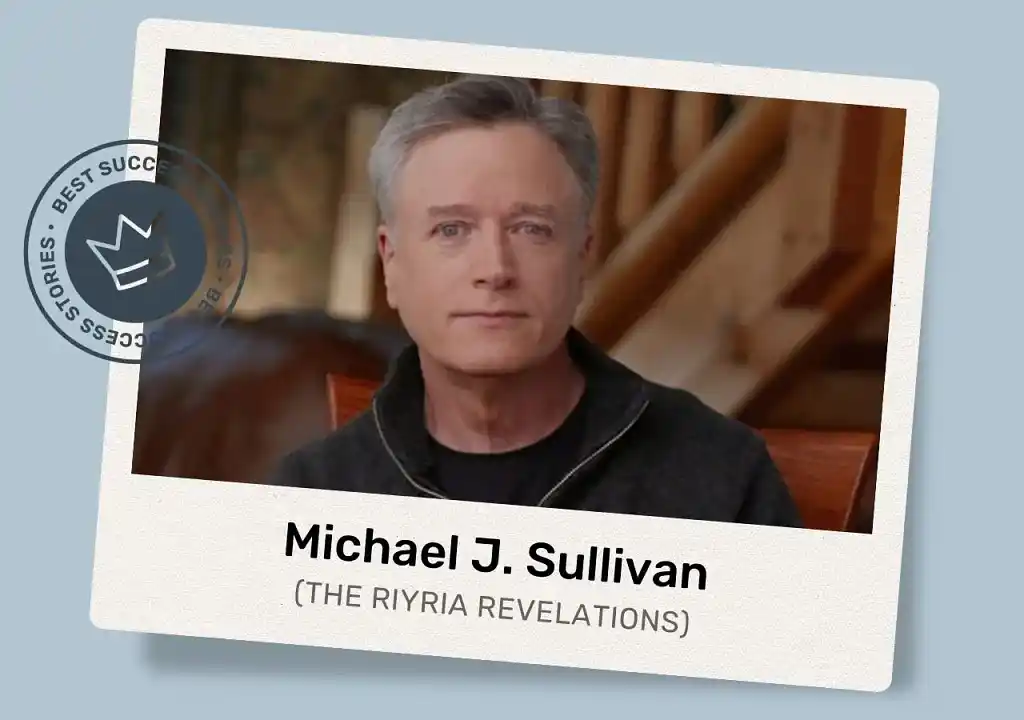
7. Blake Crouch
Early in his career, Blake Crouch released four thriller novels through St. Martin's Press, including Desert Places and Locked Doors. However, after experimenting with self-publishing novellas and other works, he set out to revert the rights of his first books, which proved difficult as certain conditions had to be met (he had to prove that the warehouse was out of stock and that sales were declining).
Once he reclaimed the rights, Crouch hired a cover designer to refresh the branding and republished them under his own banner. Within three months, his earnings from Kindle Direct Publishing (KDP) exceeded the $6,000 advance he had received for his first novel. Reflecting on this shift, he said: "To be paid monthly to write exactly what you want to write and have absolute control over the presentation is an amazing thing."
Q: What proactive steps ensure inclusivity and authentic representation in publishing projects?
Suggested answer
Inclusivity and diversity are important to me. I'm part of several minorities, but I know I can't speak for all minorities or for all members who happen to be in the same minority group as I am.
I start by actively advertising that I'm looking for inclusive projects. Whenever I collaborate on books in which one or more characters is part of a minority group, I take time to talk to the author about what this means for the book and how that character's identity affects the story. It's important for me to do some outside research as well, even if that's just a few minutes searching google. Some books have casual inclusivity while others have very intentional inclusivity, and we need both for different reasons.
I do a lot of character analysis when I work on story editing, which is a great time to talk about whether a book could be more inclusive and what that looks like. Making a book inclusive doesn't have to be hard. We've all heard "write what you know," but people can get to know new things—that's called learning.
I work on children's books, primarily, and I believe that every child should be able to find characters who are like them.
Sirah is available to hire on Reedsy ⏺
Over time, he independently published several other books, many of which were later picked up by traditional publishers. His Wayward Pines trilogy became an international bestseller and was adapted into a TV series produced by M. Night Shyamalan. His latest novel, Upgrade (which was reviewed on Reedsy Discovery) has been praised by the likes of Andy Weir and Diana Gabaldon.
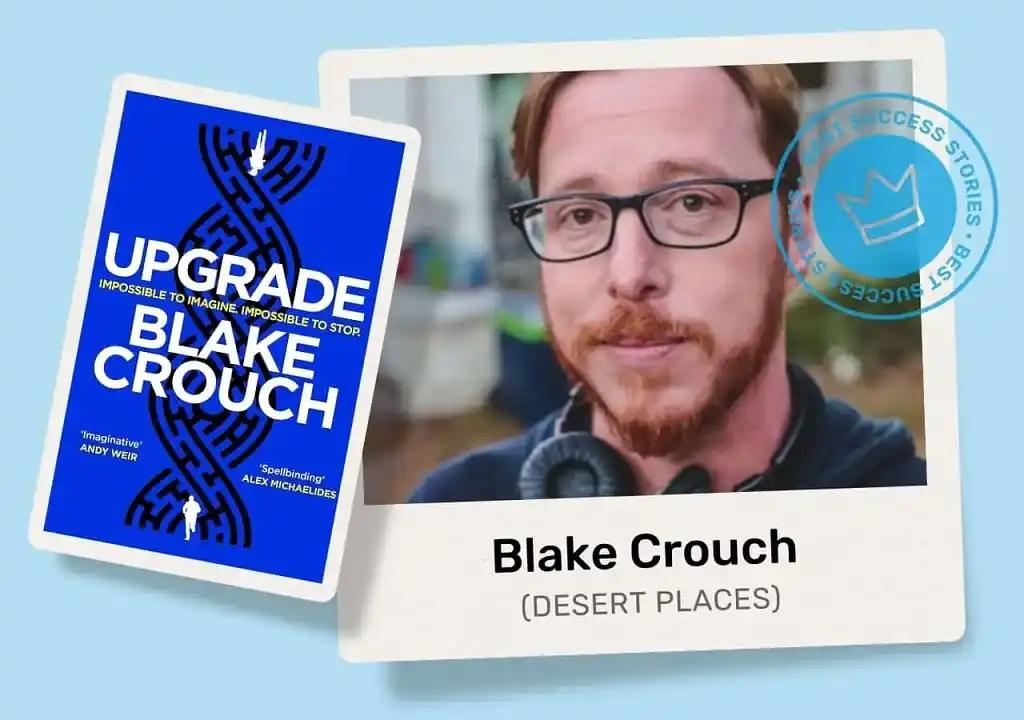
8. Becky Chambers
Like Andy Weir, Becky Chambers grew up with parents working in the space industry, which sparked her early interest in space and writing. In her mid-twenties, while working as a technical writer to make ends meet, she began drafting her debut novel, The Long Way to a Small, Angry Planet.
Despite living paycheck to paycheck, she took two months off to finish the book, funding the final stages through a successful Kickstarter campaign. But since she couldn’t land a book deal, she decided to self-publish, if only to honor the support of her backers. The book’s release covered her production costs, but the real big break came when she attended Worldcon (The World Science Fiction Convention) in London. There, by sheer luck (or destiny), she connected with an editor who read her book and offered her a deal with a Big 5 publisher.
And after being re-published, The Long Way to a Small, Angry Planet (the first in the four-book Wayfarers series) became the first self-published book shortlisted for The Kitschies, an award celebrating the best speculative fiction. Chambers’ success didn't stop there — she’s now a two-time Hugo Award winner, a Locus Award winner, and has been nominated for the Nebula Award, among others.
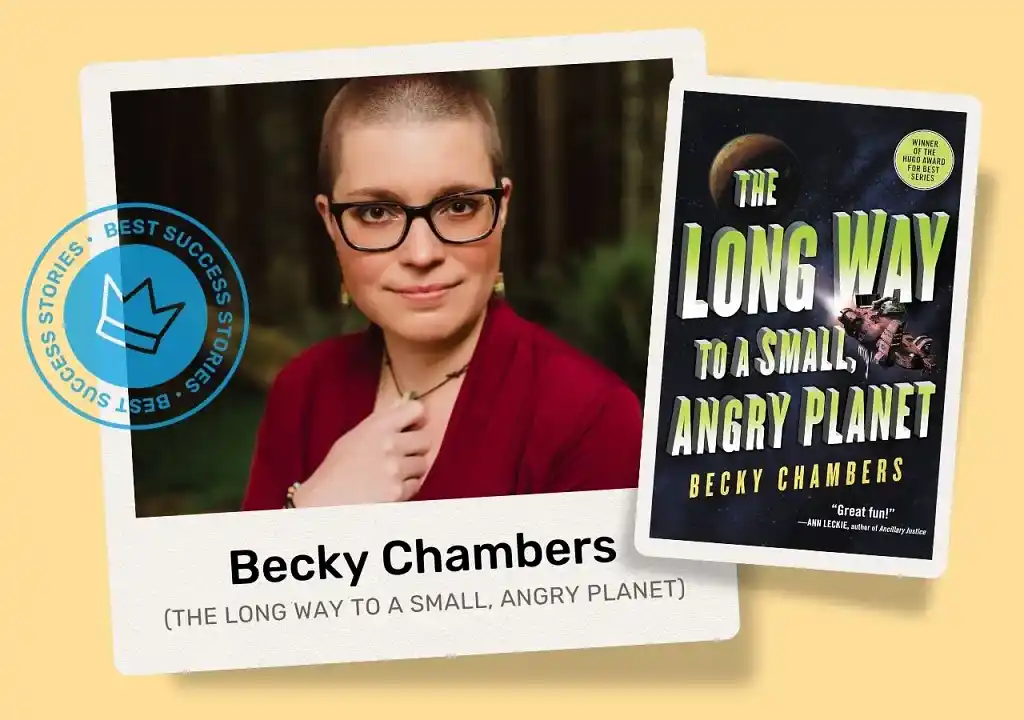
9. Natalie Barelli
Like many authors, Natalie began her journey with the dream of publishing a novel — specifically, a psychological suspense. After grappling with the first draft, she turned to Reedsy editors Katrina Diaz and Aja Pollock for developmental and copy edits, which helped her get the manuscript to professional publishing standards and launch her career.
Q: What advice would you give to someone who wants to become a full-time writer?
Suggested answer
Write. Write every day. Work on your craft. Join a writers group and share your writing with others, get feedback, and provide feedback on their writing.
Writing is like exercise. You have to work on it consistently and build it up over time.
Maria is available to hire on Reedsy ⏺
Once Until I Met Her was polished, she self-published it on Amazon, and just six months later, it was picked up by Amazon’s Thomas & Mercer imprint. Since then, her follow-up psychological thrillers have been incredibly well-received, selling tens of thousands of copies. She now publishes under various imprints, like HarperCollins' Last World and Hachette’s Bookouture.
Take a deeper dive to learn more about Natalie’s self-publishing success.
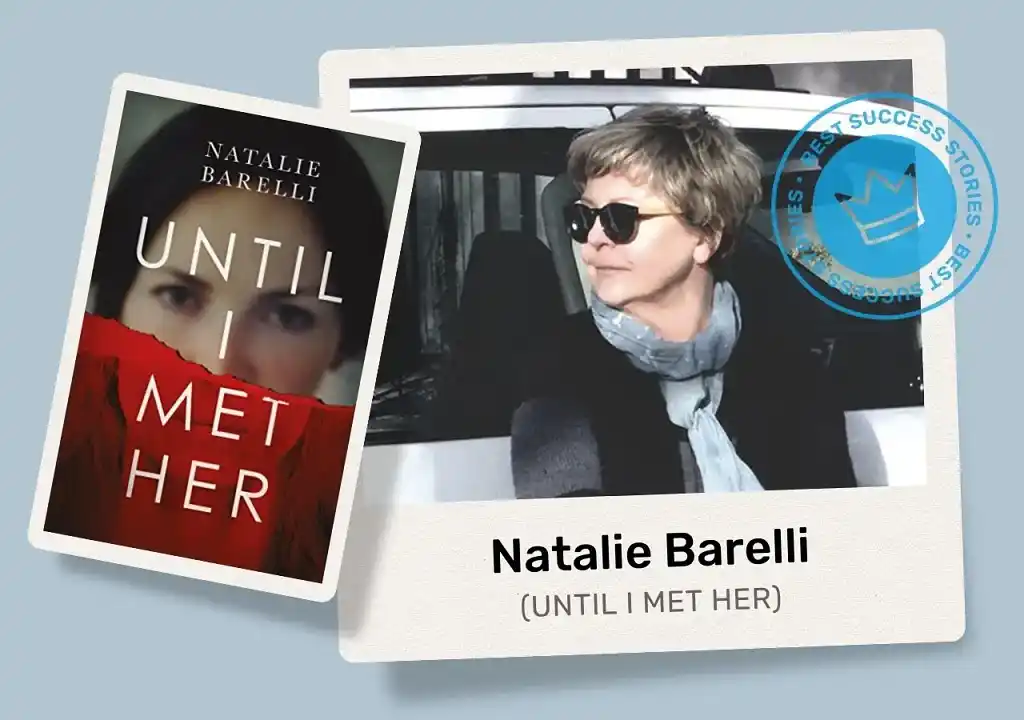
The best editors in the industry are on Reedsy.
Penny S.
Available to hire
Deputy Chief Editor then Director of the Oxford English Dictionary; 23 years at the OUP. Now editing texts for a varied range of authors.
Amy S.
Available to hire
Friendly, thorough, supportive editor/proofreader for your novel. Experience in romance, historical, LGBTQIA+, mystery, YA, sci-fi, fantasy.
Daniel P.
Available to hire
Former New Yorker editorial staff, interested in literary fiction and nonfiction. Bylines in The New Yorker, The Paris Review, GQ, and NYT.
10. LJ Ross
The British publishing scene is famously London-centric, so when Northumberland-born lawyer Louise Ross (publishing as LJ Ross) wrote the first of her wildly successful DCI Ryan crime thrillers, she set it in England's Northeast — and made the decision to self-publish her debut novel.
Flash-forward a few years later, Ross's books have sold over 7 million copies worldwide, and 18 of her novels have hit the #1 spot on bestseller lists. While you'll find her books in almost every English home and tourist shop north of Durham, her influence now extends far beyond her homeland.
She’s been called “the Queen of Kindle” for her ebook sales success by the Sunday Telegraph. The Daily Mail has hailed her as “the next J.K Rowling” (before that became a controversial thing), and she was the first self-published author shortlisted for the British Book Awards. And she did it all herself.
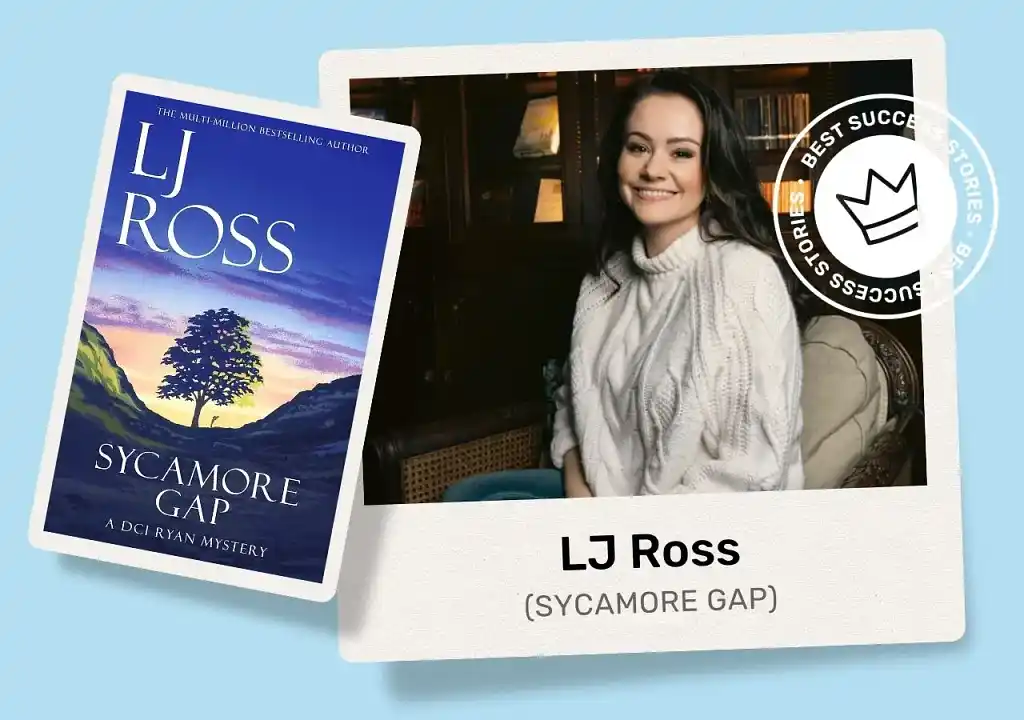
11. Christopher Paolini
As the story goes, Christopher Paolini wrote his debut, Eragon, as a 15-year-old. However, he finished and self-published the epic fantasy children’s novel at 19 with his parents’ help. The young author then tirelessly promoted his book, embarking on a country-wide book tour, appearing in schools, festivals, bookshops, libraries, and anywhere else he could (in medieval garb, no less).
A year later, Paolini was approached by Alfred A. Knopf with a publishing deal for Eragon and the rest of The Inheritance Cycle. The series has since sold over 35 million copies, giving Paolini the Guinness record for being the “youngest author of a bestselling book series.”
Q: What are the most important habits for new writers to develop?
Suggested answer
You want to become a habit writer. That means writing daily or having set times each week set apart for writing and then keeping that appointment with yourself to write during that time, barring an emergency. One way to do this is to set a special area to write where you cannot be disturbed, go to a coffee shop or library to write, or write with a buddy in your critique group so you can both motivate each other to keep going. NaNoWriMo [National Novel Writing Month] is a great group to join during November for this sort of group motivation.
You also want to continue reading books in your genre and continue learning how strong writers write.
Getting used to receiving feedback is also a good idea. If possible, join a writing club or critique group in your area or online. Attend writing workshops at your local libraries. We all have strengths and weaknesses, and receiving feedback from peers and editors will help us to realize what these are, so we can keep improving.
Melody is available to hire on Reedsy ⏺
Even though Paolini transitioned to traditional publishing, what then became a legendary literary phenomenon all started with a single self-published book.
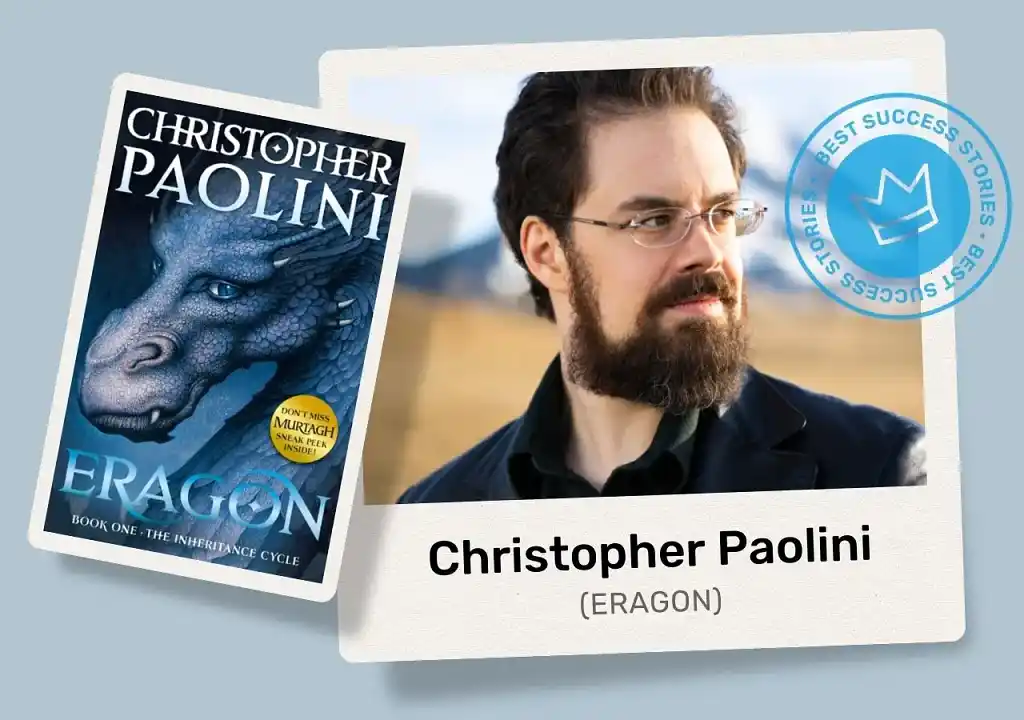

Polish your book with expert help
The best editors in the industry are on Reedsy. Come meet them.
Learn how Reedsy can help you craft a beautiful book.
12. Francesca Catlow
Francesca Catlow wrote her first novel during COVID lockdowns while taking care of her newborn baby, an injured mother, and chronically ill husband. “I fantasized about escaping to Corfu, so, while breastfeeding my baby at 4am, I started writing The Little Blue Door and set the story there. I didn’t stop for four weeks until the first draft was complete.”
Driven by a dream of earning a living as an author but too impatient to wait for a traditional publishing deal, she turned to a vanity press. Unfortunately, they did a poor job preparing her book for publication. After much effort (and a few tears) she regained her publishing rights and decided to give her novel the proper chance it deserved — starting with a brand-new cover designed by Reedsy’s Andrew Davis.
From there, everything changed. Her sales jumped from a few hundred copies to thousands, making her an Amazon Top 50 Bestseller and a 2023 Kindle Storyteller Finalist. Her books are now stocked in bookstores, and she’s been invited to signings at Waterstones and indie bookshops. Often set on the beautiful island of Corfu, they continue to receive glowing praise. Despite the initial challenges, she achieved her dream of becoming a full-time author.
Take a deeper dive to learn more about Francesca’s self-publishing success.
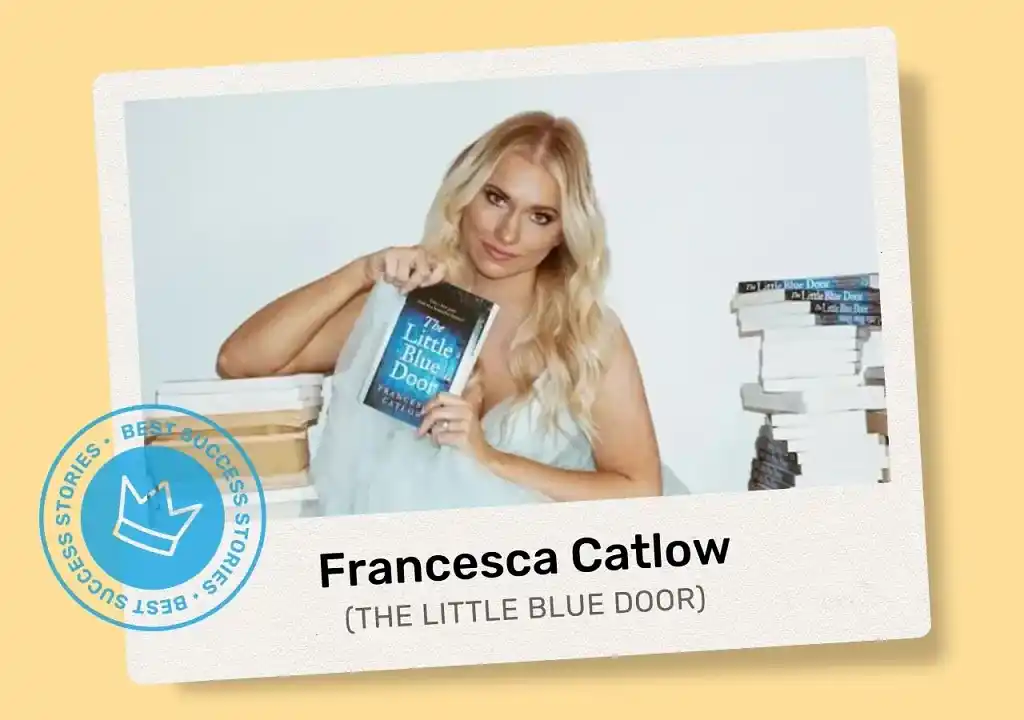
13. Rupi Kaur
At the tender age of 21, university student Rupi Kaur wrote, illustrated, and self-published her debut poetry collection, milk and honey. Kaur had already become a prominent figure in the growing “Instagram poetry” movement, and she adeptly used her talent and platform to sell over 8 million copies of her first two NYT-bestselling poetry collections.
In an interview with the Times of India, the poet explained that self-publishing gave her the power to overcome her socially marginalized status: “The literary world didn’t even see me. I was a 20-year-old, brown, Punjabi Sikh woman from a working class immigrant family.” For Rupi Kaur, self-publishing meant taking control of her narrative without relying on anyone else’s approval.
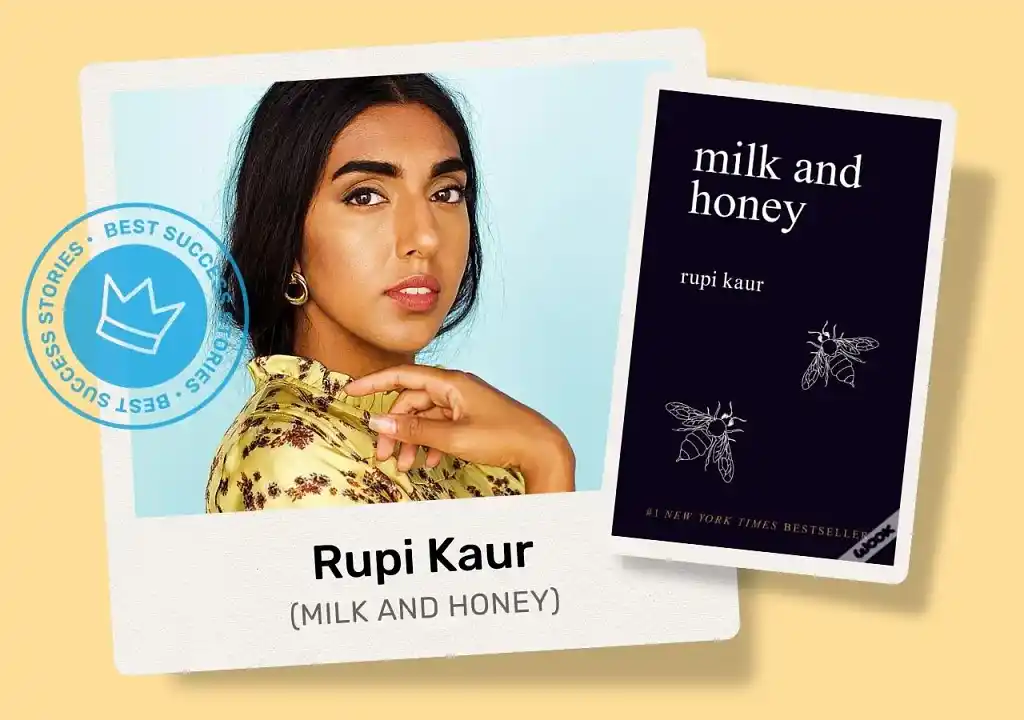
14. Rachel Abbott
Another novelist on this list who built an empire on thrillers, Rachel Abbott (real name Sheila Rodgers) has sold over 4 million copies in the English language alone. She was the first self-published author to ever reach #1 on Amazon and has secured trailblazer status in the indie community.
Q: Can a beta reader replace a developmental editor?
Suggested answer
Nope, a beta reader can’t replace a developmental editor—and here’s why:
While beta readers are awesome for giving general feedback from a reader’s perspective (like plot impressions, character likability, or whether the pacing kept them turning the pages), they’re not trained professionals when it comes to deep story structure and craft.
A developmental editor dives much deeper. They analyze the bones of your story—plot arcs, pacing, character development, themes, structure, and consistency. They help shape and fine-tune your narrative to ensure it’s compelling, cohesive, and working as a whole. Their feedback isn’t just “I didn’t like this part” but more along the lines of “This subplot doesn’t serve the main storyline—here’s why, and here’s how you might tighten it.”
Beta readers provide valuable insights, but it’s more like a test screening for an audience’s reaction. A developmental editor, on the other hand, is the director who helps get the story in top shape before the curtain even rises. Ideally, both roles are helpful, but they do very different things—and one shouldn’t be seen as a substitute for the other.
Eilidh is available to hire on Reedsy ⏺
No.
A beta reader can give you a subjective opinion on your story; a developmental editor can give you objective advice on how to strengthen it.
Beta readers are a great place to start. You can see what issues and questions come up for readers and take some steps to self-edit . But this will never be a replacement for a professional assessment.
Margot is available to hire on Reedsy ⏺
No. While a beta reader may be able to spot some weaknesses, they don't have the expertise to help a new author implement the needed changes that will help the book become strong enough to be published.
Melody is available to hire on Reedsy ⏺
I may have a different opinion here. I was a beta reader and critique partner before becoming an editor, and that experience helped me hone my skills. If you have an excellent beta reader who spends a lot of time studying the industry and does this a lot, that may replace a developmental editor, particularly in traditional publishing, where your book will go through many more rounds of editing before it is published. (But the book still has to be excellent before you get an agent or editor!) However, "beta reader" is generally used to mean a person who gives an author relatively quick thoughts on a book. They may be able to speak to things they personally liked or didn't like, but not separate whether that's personal preference or a real problem with the book (to be fair, editors struggle with this too). They may be able to point out something that isn't working, but struggle to suggest ways to approach the problem in search of solutions. Also keep in mind that beta readers are generally reading for free or sometimes a very low cost. In my developmental edits, I provide thousands of comments (depending on length). Is it really fair to ask someone to do that for free?
Tracy is available to hire on Reedsy ⏺
No. It's in the name: beta reader... A good beta reader gives essential feedback from the position of a reader.
I am a developmental editor... I give essential feedback from the position of a professional editor with decades of experience doing so.
I appreciate and respect an author who has taken the time and effort to acquire feedback from a beta reader.
Maria is available to hire on Reedsy ⏺
No. A beta reader by definition is a non-professional who is a fan of the genre, who provides a reader's-eye view of the book. How did they experience the story? What were their emotional reactions? Were they confused? Were there things they particularly liked? They're a test audience so the author knows if they achieved what they set out to do. A developmental editor, on the other hand, is an experienced pro who can not only identify issues but offer ways to address those issues while bringing a breadth and depth of experience and perspective that amateurs cannot. Beta readers are volunteers offering opinions, while developmental editors are paid professionals offering solutions.
Elizabeth is available to hire on Reedsy ⏺
Considering her claim that says “[she] wrote the first book for a bit of fun”, Abbott's astonishing career shows that you really can turn your passion into a job and that hard work really does pay off.
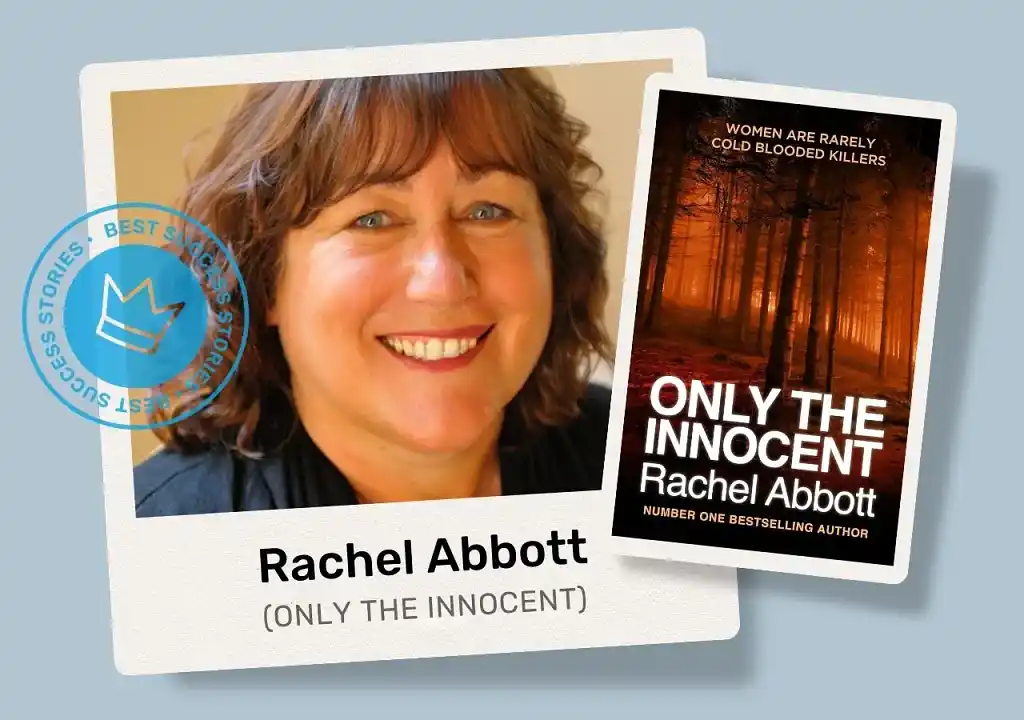
15. Hugh Howey
If anyone ever had an unconventional career trajectory, it’s Hugh Howey. Before he became an author, he wore many hats, working over the years as a yacht captain, a computer repairman, and much more. During a stint as a bookstore clerk, he began writing his first novel in the store's backroom. Rather than going down the traditional publishing route, he once again took the road less traveled and self-published his novel through Amazon KDP.
His sci-fi novel, Wool, was a runaway success, and thanks to the fact that he retained most of his revenue as an indie publisher, he was soon making $100,000 a month on Amazon sales alone.
Interest in his first book led to sequels and a six-figure book deal with Simon & Schuster. Howey only sold his print rights and turned down much more lucrative deals in favor of retaining his ebook rights and the freedom to self-publish them as he wished. Recently, he’s added a TV show to his list of accomplishments with SILO, a big-budget Apple TV adaptation of Wool.
Straddling the line between traditional and independent publishing, Howey has managed to get the best of both worlds.
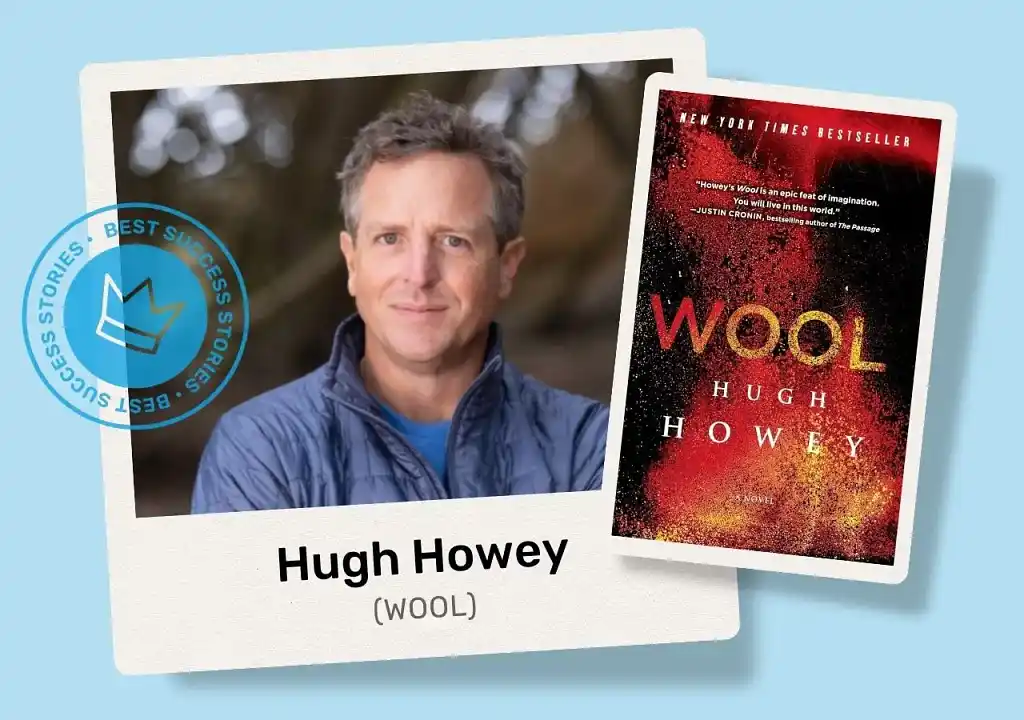
16. Catherine Pettersson
Catherine Petterson's path to publication, like many others, involved a few rejections along the way. Her historical fiction debut, A Daughter of the King, faced numerous agent rejections — until a turning point at the Stockholm Writing Festival. There, she met another author named Catherine, who shared how she secured an agent after working with Reedsy editor Claire Baldwin. Inspired, Petterson hired Claire to do a full developmental edit of her manuscript. Claire's insights into the competitive publishing market helped address issues like low tension, pacing, and plot holes.
With a stronger manuscript, she began pitching again. When Wild Rose Press, a U.S. indie publisher specializing in romance and historical fiction, requested the full manuscript, they were so impressed that they ended up offering her a deal.
Q: How do editors stay updated on current trends in publishing?
Suggested answer
Like any other profession, editing has its own membership organizations, publications, and conferences. I joined the Editorial Freelancers Association, Nonfiction Authors Association, and others so I can participate in the online chats and attend conferences such as Women in Publishing. Reedsy has a robust library of webinars, and don't miss their live webinars on cover critique, editing, and marketing. I read new books by industry thought leaders (notably Ricardo Fayet, Penny Sansevieri, and the University of Chicago). I attend conferences (IBPA among others). And I often take classes to sharpen my skills. Consider the NFAA's courses on publishing, marketing, and publicity. Editors need to understand the entire process from conception through writing and production, cover design, and marketing. With so much change and controversy especially around artificial intelligence, we cannot continue to do the same things without innovation and integration.
Sandra is available to hire on Reedsy ⏺
As a commercial fiction editor, I need to make sure I'm keeping up to date on the latest trends in publishing to ensure that I'm advising my clients appropriately. I do this through being a member of professional organisations like the Charted Institute of Editing and Proofreading and taking professional development courses to improve my skills as an editor, but also by ensuring I'm always aware of the current bestsellers and emerging trends and genres in the industry. It's so important for editors to understand what people are enjoying and why, so I read a lot! I keep a close eye on the bestseller charts and what is going viral on TikTok, as well as recent acquisitions in the Bookseller. I also do freelance editorial work with publishers so have a good sense of what they are acquiring and what is coming down the line!
Siân is available to hire on Reedsy ⏺
Her journey taught her the value of working with publishing professionals to create a market-ready manuscript. "There's no doubt in my mind that Claire's contribution made all the difference in securing my publishing deal." Since then, Petterson has remained active in the writing community, founding The Stockholm Writers Festival to help writers "find their path to publication."
Take a deeper dive to learn more about Catherine’s self-publishing success.
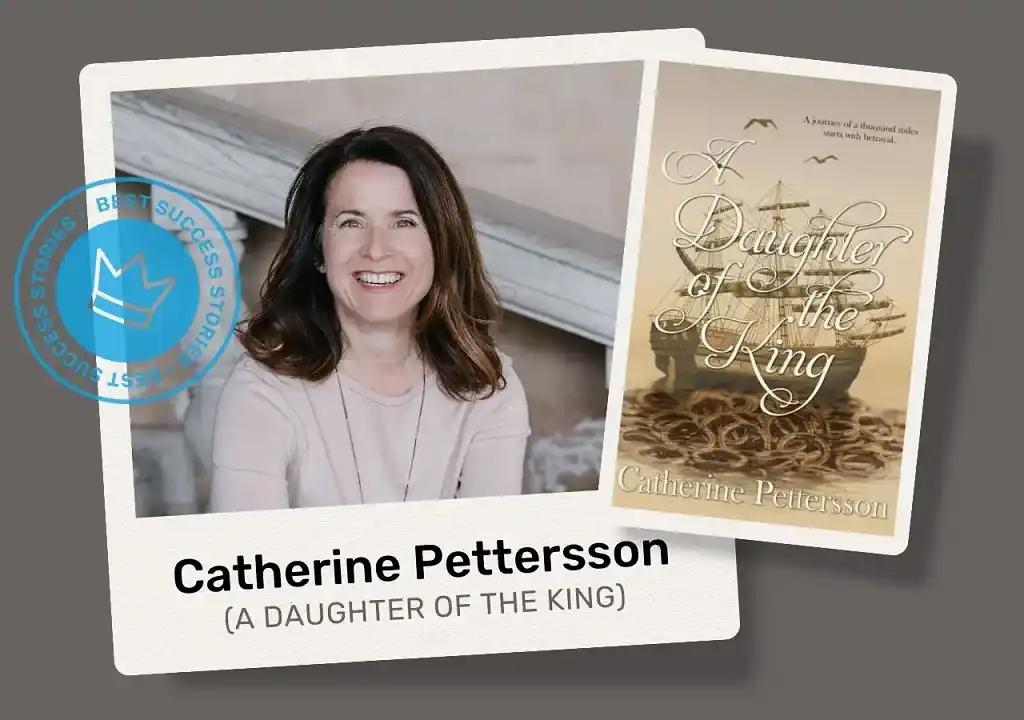
17. Zenda Walker
Inspired by conversations with her daughter, Zenda Walker set out to write a picture book to help Black children connect with the unique heritage of their hair. As a hairstylist and keen amateur historian, Zara’s Wash Day allowed Walker to combine her interests and help children like her daughter learn to be proud of their unique qualities.
With the help of Reedsy designer Anthony Foronda, Walker self-published Zara’s Wash Day to great acclaim, winning the 2021 Writer's Digest Self-Published Book Award. In 2024, the book was republished by Running Press Kids (Hachette) with a foreword by award-winning actor Lupita Nyong'o. Its success led to a book deal for the next installment in the series, Zion’s Crown, which features a blurb from Dr. Ibram X. Kendi, author of Antiracist Baby and Stamped.
Take a deeper dive to learn more about Zenda’s self-publishing success.
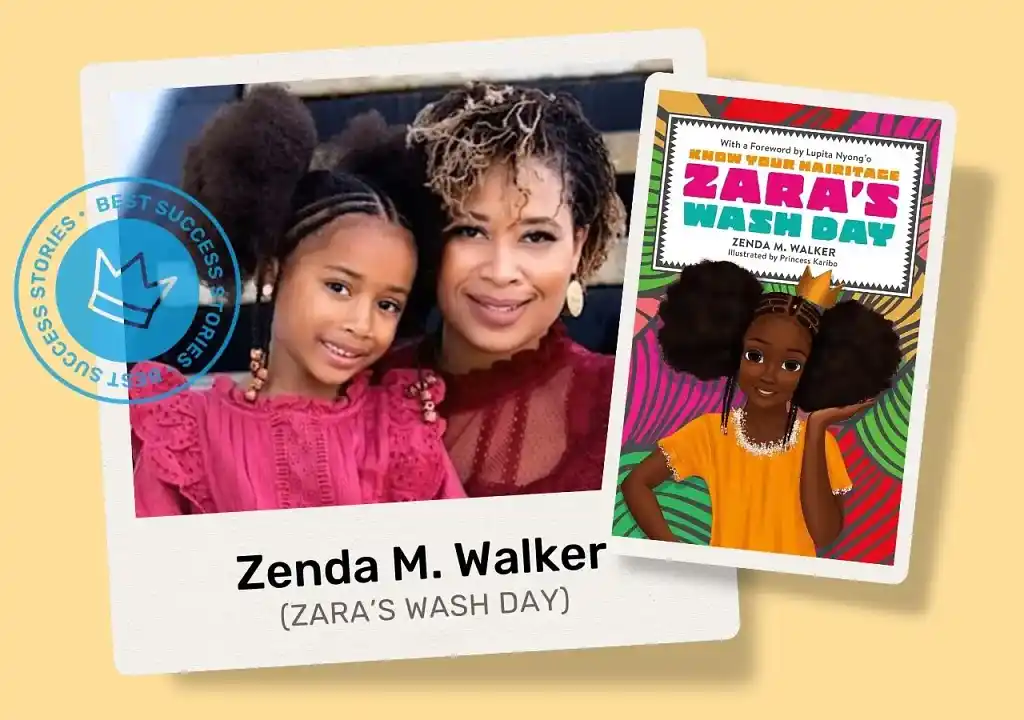
If there's one takeaway from all these stories, it's that there are many paths to literary success. As long as your writing is compelling and you believe in it, you should be able to find your audience and, hopefully, carve a career out of it. May these stories inspire you to keep elevating your craft and take bold steps toward achieving your dreams!
